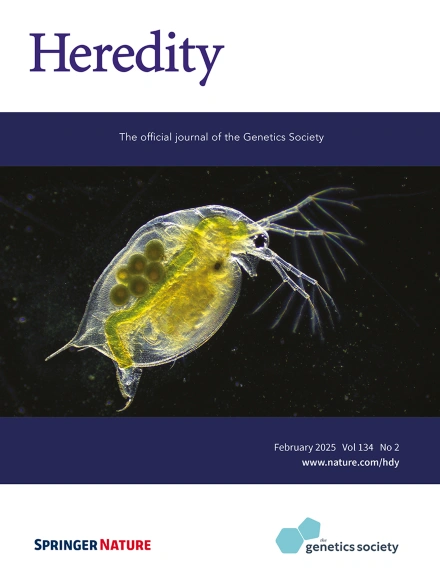View Item
- xmlui.general.dspace_homeCentros e Institutos de InvestigaciónCIRN. Centro de Investigaciones de Recursos NaturalesInstituto de Recursos BiológicosArtículos científicosxmlui.ArtifactBrowser.ItemViewer.trail
- DSpace Home
- Centros e Institutos de Investigación
- CIRN. Centro de Investigaciones de Recursos Naturales
- Instituto de Recursos Biológicos
- Artículos científicos
- View Item
Revealing stable SNPs and genomic prediction insights across environments enhance breeding strategies of productivity, defense, and climate-adaptability traits in white spruce.
Abstract
Exploring the relationship between phenotype, genotype, and environment is essential in quantitative genetics. Considering the
complex genetic architecture of economically important traits, integrating genotype-by-environment interactions in a genome wide association (GWAS) and genomic prediction (GP) framework is imperative. This integration is crucial for identifying robust
markers with stability across diverse environments and improving the
[ver mas...]
Exploring the relationship between phenotype, genotype, and environment is essential in quantitative genetics. Considering the
complex genetic architecture of economically important traits, integrating genotype-by-environment interactions in a genome wide association (GWAS) and genomic prediction (GP) framework is imperative. This integration is crucial for identifying robust
markers with stability across diverse environments and improving the predictive accuracy of individuals’ performance within
specific target environments. We conducted a multi-environment GWAS and GP analysis for 30 productivity, defense, and climate adaptability traits on 1540 white spruce trees from Alberta, Canada, genotyped for 467,224 SNPs and growing across three
environments. We identified 563 significant associations (p-value < 1.07 ×10−05) across the studied traits and environments, with
105 SNPs showing overlapping associations in two or three environments. Wood density, myrcene, total monoterpenes, α-pinene,
and catechin exhibited the highest overlap (>50%) across environments. Gas exchange traits, including intercellular CO2
concentration and intrinsic water use efficiency, showed the highest number of significant associations (>38%) but less stability
(<1.2%) across environments. Predictive ability (PA) varied significantly (0.03–0.41) across environments for 20 traits, with stable
carbon isotope ratio having the highest average PA (0.36) and gas exchange traits the lowest (0.07). Only two traits showed
differences in prediction bias (PB) across environments, with 80% of site-trait PB falling within a narrow range (0.90 to 1.10).
Integrating multi-environment GWAS and GP analyses proved useful in identifying site-specific markers, understanding
environmental impacts on PA and PB, and ultimately providing indirect insights into the environmental factors that influenced this
white spruce breeding program.
[Cerrar]

Author
Cappa, Eduardo Pablo;
Chen, Charles;
Klutsch, Jennifer;
Sebastian - Azcona, Jaime;
Ratcliffe, Blaise;
Wei, Xiaojing;
Da Ros, Letitia;
Liu, Yang;
Bhumireddy, Sudarshana;
Benowicz, Andy;
Mansfieid, Shawn;
Erbilgin, Nadir;
Thomas, Barb;
El - Kassaby, Yousry;
Fuente
Heredity 134 (2). (Marzo 2025)
Date
2025-03-24
Editorial
Springer
ISSN
1365-2540
0018-067X
0018-067X
Formato
pdf
Tipo de documento
artículo
Palabras Claves
Derechos de acceso
Abierto
 Excepto donde se diga explicitamente, este item se publica bajo la siguiente descripción: Creative Commons Attribution-NonCommercial-ShareAlike 2.5 Unported (CC BY-NC-SA 2.5)
Excepto donde se diga explicitamente, este item se publica bajo la siguiente descripción: Creative Commons Attribution-NonCommercial-ShareAlike 2.5 Unported (CC BY-NC-SA 2.5)


